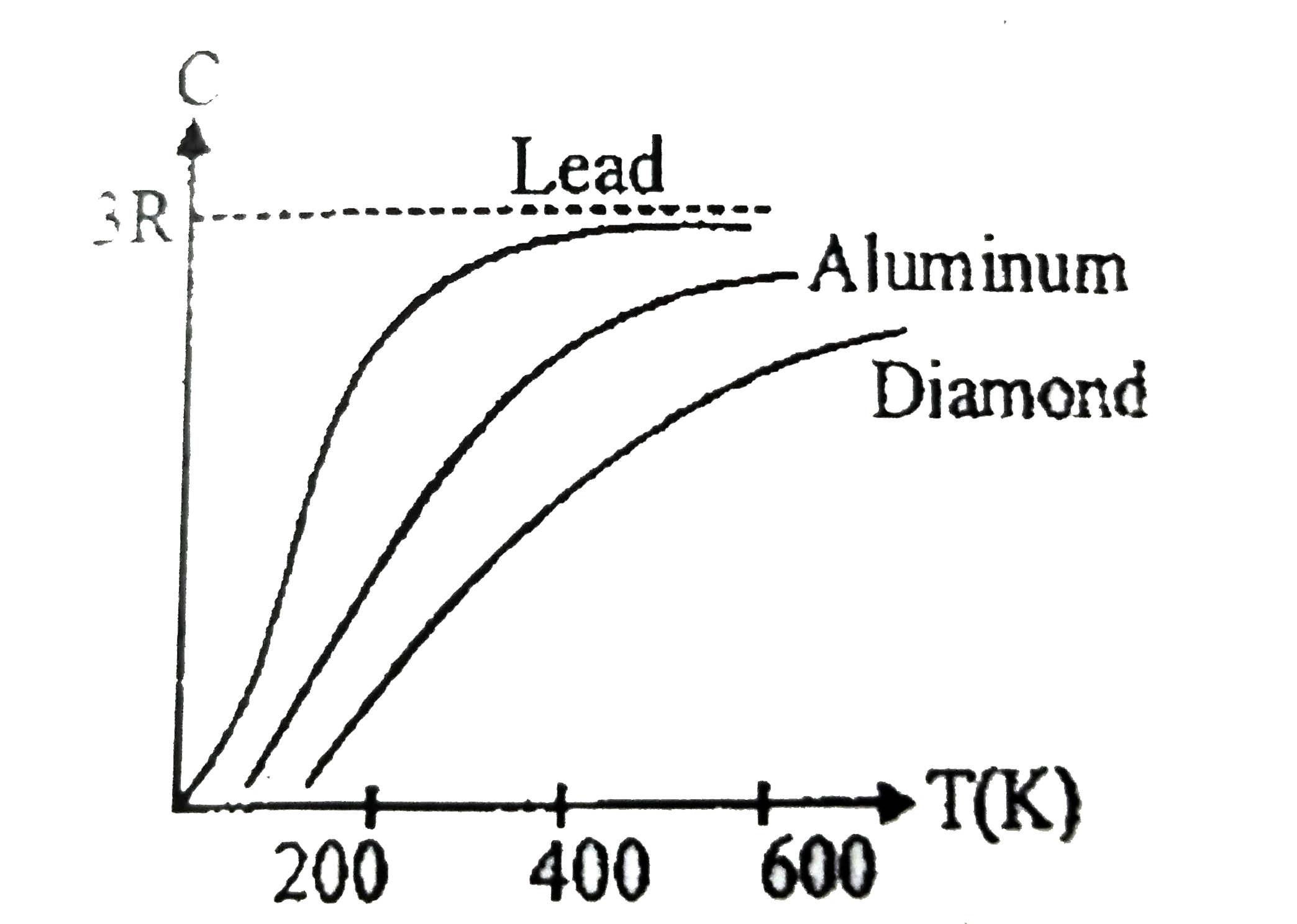How specific heat capacity of mono atomic, diatomic and poly atomic gases can be explained on the basis of Law of equipartition of Energy ?
Text Solution
Specific heat capacity :
(1) Monoatomic gases : according to law of equipartition of energy, a molecue of monoatomic gas has only 3 translational) degrees of freedom. i.e., f = 3
The molar specific heat of the gas at constant volume is given by Cμ=f2R where f is degree of freedom.
∴CV=32R=3 cal/mole k [∵R=2 cal/mol - k]
The molar specific heat at constant pressure is given by
Cp=(f2+1)R=(32+1)R=52R=5 cal/mole - k
(2) Diatomic gases : A molecule of diatomic gas has 5 degrees of freedom, 3 translational and 2 rotational i.e., f=5
Therefore CV=f2R=52R=5 cal/mole - k, Cp=(f2+1)R=72R=7 cal/mole-k
(3) polyatomic gases : polyatomic molecule has 3 translational, 3 rotational degrees of freedom. i.e., f=6
Therefore CV=f2R=3R=6 cal/mole -k , Cp=(f2+1)=4R=8 cal/mole-k
|
Similar Questions
Knowledge Check
According to Dulong & Petits law, molar heat capacity of solids at room temperature is nearly equal to 3R. This can be explained using law of equipartition. Each atom of solid is boned to neighboring atoms by interatomic forces. Each atom can vibrate about its equilibrium positum. So each atom has 6 degrees of freedom. But in relaity, the molar heat capacity of solids varies. with temperature as shown in figure.

At low temperature, the heat capcities decrease with decreasing temperature. This is due to the fact that variational degrees of freedom are frozen out at low temperatures.
Selec the correct statement(s).AA sample of lead requires less heat to go from 100K to 150K then to go from 300K to 350KBA sample of lead requires more heat to go from 400K to 440K then to go from 100K to 140KCFor diamond at room temperatures also vibrational degrees of freedom are partially frozen.DThe specific heat capacity of all solids at high temperature is nearly the same.The internal energy of one mole mono-atomic gas is
A5RT2B3RT2C5RT3D7RT3
Explain how the specific heat capacity of a solid can be determined (measured) by the method of mixture.
View SolutionHow is the heat capacity of the body related to its specific heat capacity ?
View SolutionWhat is the specific heat ratio of diatomic gases ?
View SolutionWhy noble gases exist in mono atomic form?
View SolutionThe molar heat capacity at constant pressure of all diatomic gases is always same.
View SolutionThe ratio of specific heats in the case of mono atomic gas is
View Solution
